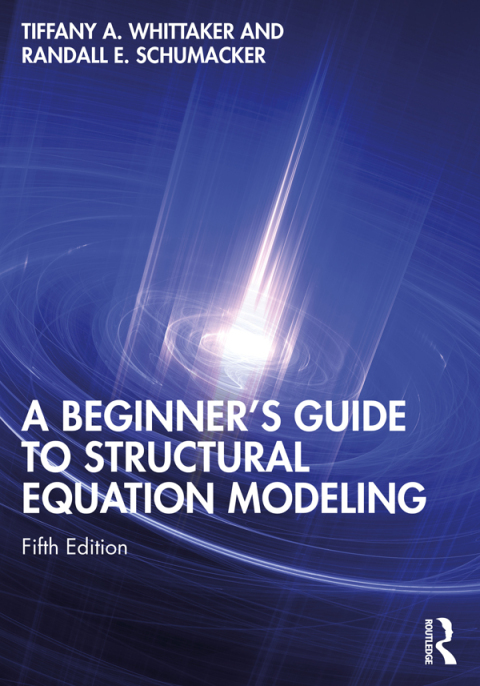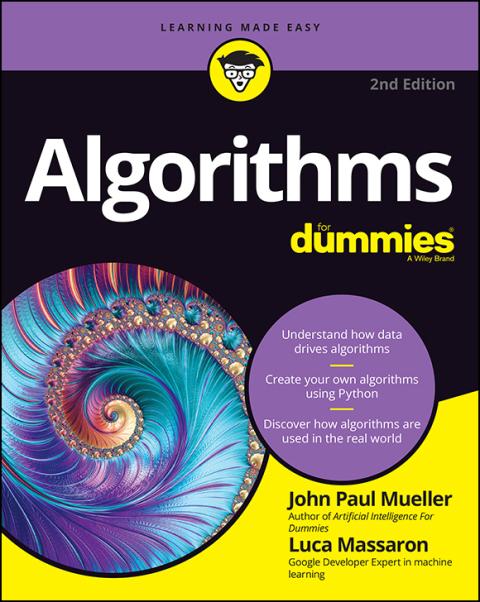Description
Efnisyfirlit
- Cover
- Half-Title Page
- Title Page
- Copyright Page
- Dedication
- Table of Contents
- Preface
- Chapter 1 Introduction
- What is Structural Equation Modeling?
- Notation and Terminology
- History of Structural Equation Modeling
- Why Conduct Structural Equation Modeling?
- Brief Consideration of Causality in SEM
- Structural Equation Modeling Software
- AMOS (SPSS)
- CALIS Procedure (in SAS)
- EQS: Stand-alone Software
- JMP: Stand-alone Software / SAS Interface
- LISREL: Stand-alone Software
- Mplus: Stand-alone Software
- OpenMx: Stand-alone Software (Free); R Interface
- R: Stand-alone Software (Free)
- SEM (in STATA)
- SEPATH (in Statistica)
- Software Considerations
- Book Website
- Summary
- Exercises
- References
- Chapter 2 Data Entry and Editing Issues
- Data Set Formats
- Data Editing Issues
- Measurement Scale
- Restriction of Range
- Outliers
- Normality
- Linearity
- Missing Data
- Summary
- Exercises
- References
- Chapter 3 Correlation and Regression Methods
- Types of Correlation Coefficients
- Factors Affecting Correlation Coefficients
- Non-linearity
- Missing Data
- Level of Measurement and Restriction of Range
- Non-normality
- Outliers
- Simple Linear Regression
- Multiple Linear Regression
- Bivariate, Part, and Partial Correlations in Multiple Regression
- Multicollinearity and Suppressor Variables
- Correlation Versus Covariance
- Variable Metrics (Standardized Versus Unstandardized)
- Correction for Attenuation
- Multiple Regression Example
- Summary
- Chapter Footnote
- Regression Model with Intercept Term
- Exercises
- References
- Chapter 4 Path Models
- Path Model Diagrams
- Decomposition of the Correlation Matrix
- Decomposition for Unstandardized Path Models
- Path Model Example
- Indirect Effects
- Causation Assumptions and Limitations
- Summary
- Exercises
- References
- Chapter 5 SEM Basics
- SEM Modeling Steps
- Model Specification
- Model Identification
- Model Estimation
- Model Testing
- Model Modification/Re-specification
- Model Estimation
- Model Testing
- Model Fit
- Chi-square (χ2)
- Model Fit Indices
- Parameter Fit
- Model Comparison
- Model Modification and Re-specification
- Modification Indices
- Expected Parameter Change
- MIs and EPCs in LISREL and Mplus
- Summary
- Exercises
- Chapter Footnote
- Chi-squares
- References
- Chapter 6 Factor Analysis
- Exploratory Factor Analysis
- Sample Size
- Number of Factors
- Rotation Methods
- Factor Scores
- EFA Versus PCA
- EFA Example
- Pattern and Structure Matrices
- Confirmatory Factor Analysis
- CFA Example
- CFA with Missing Continuous Data
- CFA Caveats
- CFA with Missing Ordinal Indicators
- CFA Model Comparisons
- Summary
- Exercises
- References
- Chapter 7 Full SEM
- Full Structural Equation Models
- Model Specification in Full SEM
- Model Identification
- Two-step Versus Four-step SEM Model Testing
- Model Estimation
- Model Testing and Model Modification
- Indirect Effects in Full SEM Models
- Summary
- Exercises
- References
- Chapter 8 Extensions of CFA Models
- Second-order Factor Model
- Model Specification
- Model Identification
- Model Estimation
- Model Testing and Model Modification
- Model Interpretation
- Bifactor Model
- Model Specification
- Model Identification
- Model Estimation
- Model Testing and Model Modification
- Model Interpretation
- Model Comparisons Between the Second-order and Bifactor Models
- Summary
- Exercises
- References
- Chapter 9 Multiple Group (Sample) Models
- Brief Summary of Multiple Group Modeling
- Multiple Group Path Analysis Model
- Model Identification in Separate Groups
- Model Estimation in Separate Groups
- Model Testing in Separate Groups
- Model Identification of the Baseline Multiple Group Model – With No Equality Constraints
- Model Estimation of the Baseline Multiple Group Model – With No Equality Constraints
- Model Testing of the Baseline Multiple Group Model – With No Equality Constraints
- Model Identification of the Multiple Group Model – With Equality Constraints
- Model Estimation of the Multiple Group Model – With Equality Constraints
- Model Testing and Modification of the Multiple Group Model – With Equality Constraints
- Final Model Interpretation
- Multiple Group CFA/Measurement Model
- Measurement Invariance
- Multiple Group CFA Example
- Model Identification in Separate Groups
- Model Estimation in Separate Groups
- Model Testing in Separate Groups
- Model Identification of the Configural Multiple Group CFA Model – With No Equality Constraints
- Model Estimation of the Configural Multiple Group CFA Model – With No Equality Constraints
- Model Testing of the Configural Multiple Group CFA Model – With No Equality Constraints
- Model Identification of the Metric Multiple Group CFA Model
- Model Estimation of the Metric Multiple Group CFA Model
- Model Testing and Modification of the Metric Multiple Group CFA Model
- Model Identification of the Strong/Scalar Multiple Group CFA Model
- Model Estimation of the Scalar Multiple Group CFA Model
- Model Testing and Modification of the Scalar Multiple Group CFA Model
- Final Model Interpretation
- Strict Invariance Testing
- Structural Model Group Differences
- Multiple Group Models with Ordinal Indicators
- Cautions about Invariance Testing
- Summary
- Exercises
- References
- Chapter 10 SEM Considerations
- Best Practices in SEM
- Checklist for SEM
- Basic Issues
- Analysis Issues
- Model Specification
- Model Identification
- Data Preparation
- Model Estimation
- Model Testing
- Model Modification/Re-specification
- Non-recursive Models
- Equivalent Models
- Summary
- References
- Introduction to Matrix Operations
- Statistical Tables
- Name Index
- Subject Index





